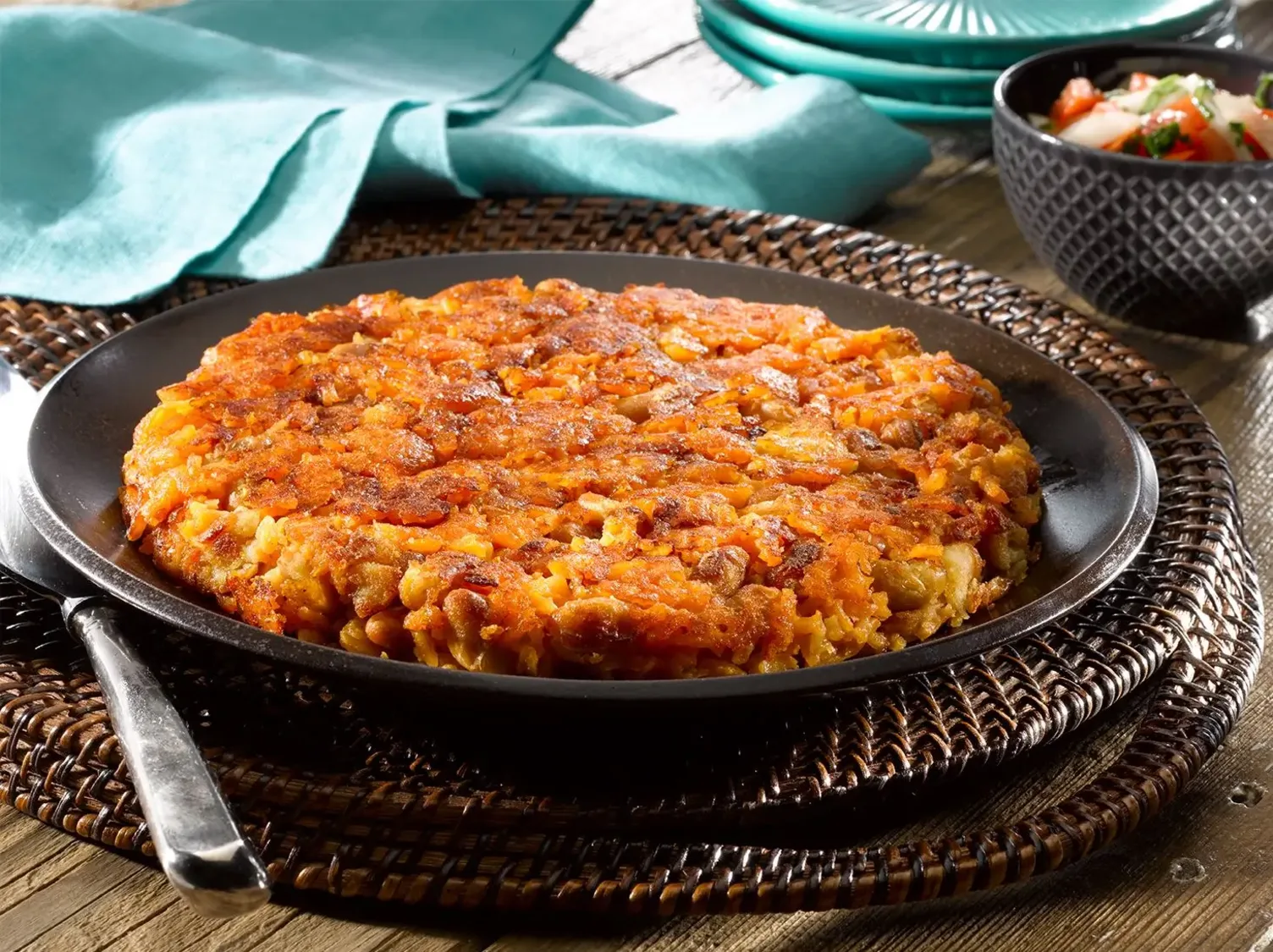
Tacu-Tacu
Refried rice and beans patty.
Ingredients
- •Rice
- •Beans
- •Onion
- •Garlic
- •Oil
Instructions
Mix
Combine rice and beans with seasonings. (10 mins)
Form
Shape mixture into patties. (5 mins)
Cook
Fry patties until crispy. (25 mins)
Tacu-Tacu is a hearty Peruvian dish that transforms humble leftover rice and beans into a deliciously crispy patty. This satisfying creation features a mixture of rice and beans seasoned with garlic, onions, and spices, formed into a patty and pan-fried until golden brown on the outside while remaining soft inside.
The dish has its roots in Peru's African-influenced coastal cuisine, where it was originally created by African slaves who worked to make the most of leftover ingredients. The name "Tacu-Tacu" is believed to come from the Quechua word "taku," which means "mixed," reflecting both its preparation method and its multicultural heritage.
The preparation starts by sautéing finely chopped onions and garlic until fragrant. Leftover cooked rice and beans are then added and mashed together with the aromatics. The mixture is seasoned with cumin, salt, and pepper, then shaped into oval patties. These patties are pan-fried in hot oil until they develop a crispy golden crust while maintaining their creamy interior.
Modern variations of Tacu-Tacu might include additional ingredients like ají amarillo paste for heat, different types of beans, or even quinoa in place of rice. Some versions are topped with a fried egg, grilled steak (bisteck), or seafood in a variation known as Tacu-Tacu a lo Macho.
In Peru, Tacu-Tacu is often served for breakfast or lunch, typically accompanied by criolla sauce (a spicy onion relish) and sometimes topped with a fried egg. It's particularly popular in coastal regions and is a staple in traditional creole restaurants known as picanterías.
From a nutritional standpoint, Tacu-Tacu is quite filling and energy-dense, containing approximately 400-500 calories per serving. The combination of rice and beans provides a complete protein source and is rich in fiber. However, the dish can be high in carbohydrates and fat due to the frying process. Those watching their fat intake might want to request less oil in the preparation or enjoy it in moderation. The dish is naturally gluten-free and vegetarian in its basic form, though toppings may change this status.
